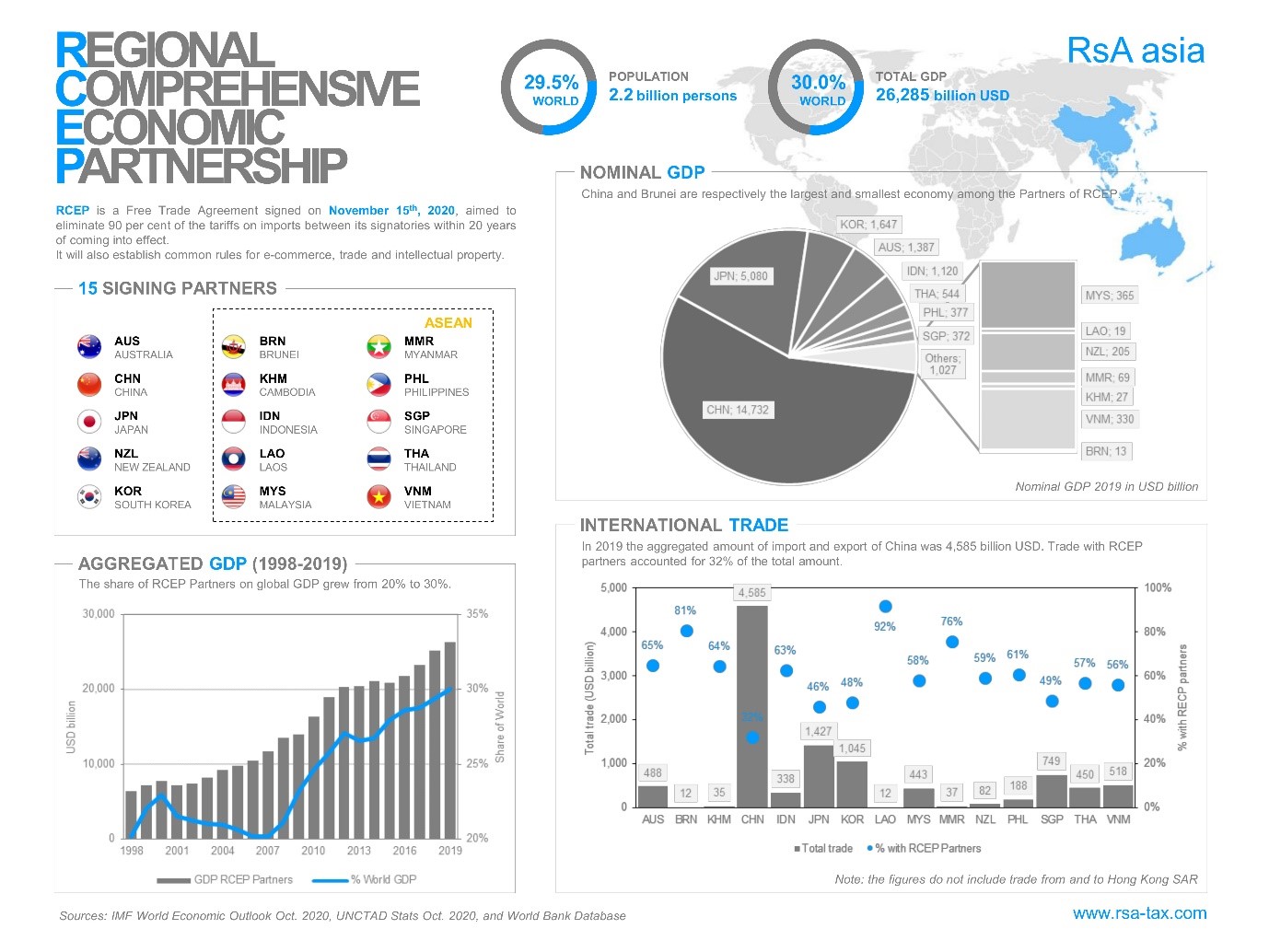RCEP launches the Asia-Pacific as the world’s largest free trade area

ICCS is glad to share an article on RCEP agreement written by ICCS Member Lorenzo Riccardi, Legal and tax consultant at RSA Asia.
The RCEP Regional Partnership is the first multilateral agreement which includes the 10 ASEAN member countries (the Association of South East Asian Countries), the Economies of North-East Asia (Japan and South Korea), the Pacific leaders (Australia and New Zealand) and the People’s Republic of China. First announced in 2012 and signed on the 15th of November 2020, the RCEP agreement includes 20 chapters, over 513 pages which makes it one of the lengthiest free trade agreements signed to date.
The signing of the Comprehensive Economic Partnership Agreement (RCEP), has revitalised the discussions surrounding free trade agreements in the Asia Pacific region, and has raised both the possibility of more Asian nations entry into the Trans-Pacific Partnership and future United States interest under President-elect Biden. Also arising out of the signing of the RCEP agreement are discussions on how Asia as a whole, may benefit the proposals for the development of a new Free Trade Zone in Africa driven through investment from Asia, particularly from China. This consolidation of global trade in the Asia pacific region has helped counterbalance the previously Euro - Atlantic centric global economy and provides the position whereby the signatories of RCEP may counteract protectionist tariffs imposed by the United States or other large trading blocs.
The Asia-Pacific, a mega region, which is the largest region by territory, by number of countries (60) and by population with 4.53 billion people, representing 60% of the world's population, is the powerhouse of growth for the global economy. Prior to the COVID-19 pandemic (IMF 2019 data), the Asia-Pacific region was growing at 4.5%, China was growing at 6.1%, and the global economy at 2.9%, and once the global health emergency concludes it is expected to be the Asia Pacific region once again will be at the centre of the world’s economic development.
It is not just RCEP, which has opened up the Asia Pacific region to free trade, in addition to RCEP, there are numerous other regional free trade agreements between the signatory parties such as the 12 free trade agreements under the Association of South East Asia Nations and the proposed Shanghai Cooperation Organization Free Trade Agreement for central Asian nations and Russia.
Free Trade Agreements bring benefits to all signatory nations, each member country of the Regional Comprehensive Economic Partnership Agreement benefits from the project. Australia, South Korea, Japan and Malaysia are economies which have a positive trade balance with China, and ASEAN's 10 members are growing through geo-economic influence by association, this geo-economic influence may extend to the two observer countries: East Timor and Papua New Guinea, as candidates to join the South East Asia Association.
The door remains open for India to join RCEP, it was initially engaged in the negotiations but ultimately pulled out from talks in 2019. Should India seek to reassess their position and join RCEP it will bring with it an additional 1.38 Billion citizens and the worlds 5th largest economy by GDP.
Should India join RCEP, the FTA would then represent 3 of the world’s top 5 economies, China (2nd) Japan (3rd) and India (5th) by GDP, truly cementing the Asia-Pacific as the most important economic region of the world.
However, it may take some time for the benefits of RCEP to take effect, the agreement has a particularly long implementing period of 20 years, although as most signatory nations already have reciprocal trade agreements with each other, most nations likely won’t take the full period to conform to the agreement.
